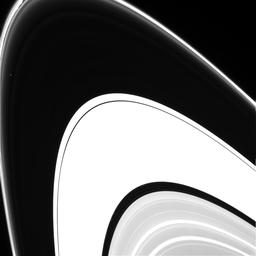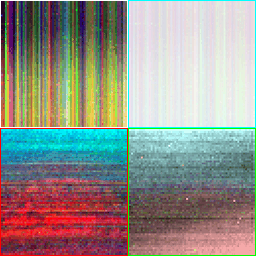Cassini Traceback
29 Nov 2019
Warning: This post contains flashing images.
Something a little more conceptual for NaNoGenMo 2019, I wanted to explore how a machine might gather information about another machine and present that in such a way that other machines might be able to consume it – how might machines tell stories about other machines?
I picked the Cassini orbiter as the subject of my machine’s story because I vividly remember watching a short video about its final orbits and being struck at how emotional I found it, partly because of how we anthropomorphised Cassini as “a lone explorer” and a “long-lived traveller from Earth”. Humans were using words and images to describe what this robot—a machine built by a group of primates from 28 different countries—had accomplished millions of kilometers from Earth, so I wanted my machine to start with the human version of events, in the form of the written accounts of Cassini’s final orbits.
After parsing those accounts for keywords my machine then queries Wikipedia and Wiktionary to try to “learn” more about what it’s “read”, and queries the incredible OPUS datastore for images taken by the instruments that were in use that exact orbit and beamed back to Earth. It stitches it all together in a stream of logs – partly human readable, partly machine readable – with the image streams from those orbits embedded throughout as animated GIFs. Here is the full output of the script, and below are some of my favourite images:


